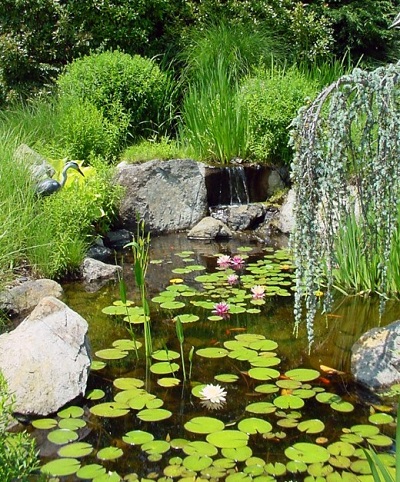 With winter fast approaching, many pond owners are clearing out ornamental aquatic plants and animals before their ponds freeze over. But some plants, like water hyacinth, water lettuce and parrot feather, that can make a pond beautiful and healthy in the summer are non-native and highly invasive species and should not be thrown away into lakes, rivers or wetlands. The Wisconsin Department of Natural Resources urges pond owners to properly dispose of these aquatic invaders.
With winter fast approaching, many pond owners are clearing out ornamental aquatic plants and animals before their ponds freeze over. But some plants, like water hyacinth, water lettuce and parrot feather, that can make a pond beautiful and healthy in the summer are non-native and highly invasive species and should not be thrown away into lakes, rivers or wetlands. The Wisconsin Department of Natural Resources urges pond owners to properly dispose of these aquatic invaders.
“Water gardeners love these plants because they are easy to care for and grow, but they may not be aware that they are also prohibited species in Wisconsin and can potentially block waterways and choke out native habitats,” says Alex Selle, an aquatic invasive species coordinator for the DNR West-Central Region.
If released into natural waterways, these plants can reproduce very quickly and potentially produce thousands of seeds that can be spread by wind or water. Left uncontrolled, the plants can form dense colonies that cover entire ponds and lakes making boating, fishing and other water activities difficult. These dense colonies can also degrade water quality by reducing oxygen levels during dieback important for fish and blocking sunlight that keeps native aquatic plants alive.
“The best way to dispose of your aquatic pond plants is to drain as much water from them as possible, bag them and dispose in your garbage pick-up,” Selle says. The bag will keep any plant fragments, like leaves, roots and seeds, from dispersing when the plants dry out.
There are ways you can help prevent the spread of aquatic plants commonly used in aquaculture:
- Build your aquatic gardens away from natural waterways and flood zones.
- Learn to recognize invasive species.
- Purchase and plant non-invasive and native plants.
- Check plant orders for unwanted invasive hitchhikers.
- Do not use invasive plants, fish, crayfish or snails in your garden.
- Do not release any plants, fish or invertebrates into natural waters.
- Consult the list of regulated aquatic invasive species [PDF] found on the DNR website.
DNR staff request that anyone who sees any of these invasive species while enjoying the natural areas of Wisconsin, report the location using the agency’s online reporting form. For more information search the DNR website, dnr.wi.gov, for aquatic invasive species.
Contact(s): Alex Selle, aquatic invasive species coordinator, DNR West Central Region, 715-831-3278 or alexander.selle@wisconsin.gov
